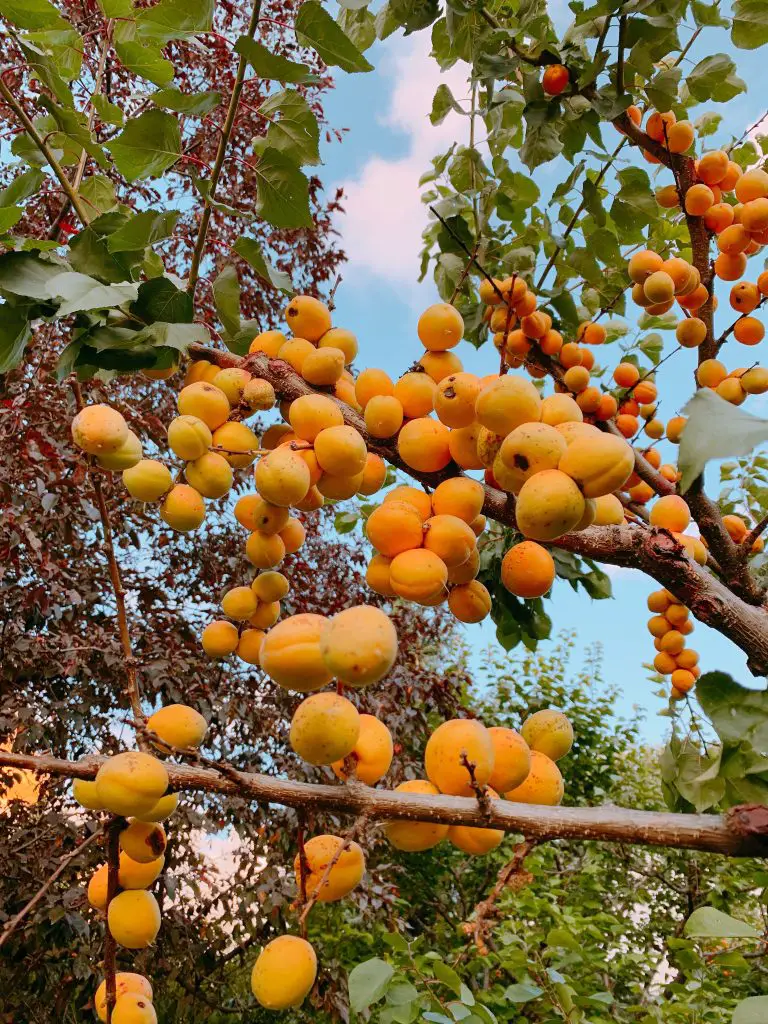When Do Apricot Trees Bloom? Apricots are one of the most prolific produces of all the stone fruit trees. They produce masses of fruit in early summer that taste much sweeter than the fruit that can be purchased from the local grocery store which is picked early to enable the Apricots to be transported. In addition to producing fruit the trees will produce a beautiful display of pink flowers, but when does that occur, and does it vary with different cultivars?
Apricot trees begin to bloom around the 10th March according to a study by the Mustafa Kemal University. The blooming period lasts for a period of around three weeks before the flowers completely disappear. During this period the tree is typically in full bloom for only a week. The particular cultivar has little impact on the flowering time with all varieties examined in the study varying by less than a week.
However, the climate of the local area can have some effect on the blooming time. A similar study conducted in Hungary, which is a cooler region than Turkey where the Mustafa Kemal University conducted showed that the blooming period shifted to 2 to 3 weeks later.
Do All Apricot Varieties Produce Fruit At The Same Time?
The study by Mustafa Kemal University showed that even though the different apricot varieties flowered at the same time they did not necessarily ripen at the same time. There are early and late fruiting varieties, however, the difference in the timing of the fruiting period was only a matter of a few weeks.
The earliest fruiting variety produced fruit around the 22nd of May and the late varieties produce fruit around the 6 to 10th of June. This is a fairly short window when you consider that the difference between early and late variety apples is 2 months or more.
It is also important to note that the length of time that the fruit is ripe on the tree is extremely short and usually only lasts a week or so. This means that it is important to have a plan for what you are doing with all the fruit, either preserving or making jams.

Do You Need More Than One Apricot Tree To Produce Fruit?
Apricot trees are self-fertile which means that only one is required to produce fruit. However, a second tree will often lift the yield of the tree significantly. However, given that the trees generally produce a relatively large amount of fruit irrespective of whether there is a second tree present, I would suggest that you would be better off selecting a different type of fruit tree rather than planting two Apricots.
How To Grow Apricot Fruit Trees?
Apricot fruit trees are extremely easy to grow and generally require little maintenance over the season apart from a winter and summer prune. They are suitable for zones 5 to 8 according to many sources however I personally grow Apricot trees in my house in zone 10 quite successfully.
The limiting factor associated with growing apricot trees in warmer climates is the need for the tree to be exposed to a sufficiently long period of cold weather. This term is sometimes referred to as “chill hours” which is the number of hours the tree is exposed to temperatures below 7°C (45°F). Apricots generally require around 400 chill hours.
If you are unsure about the number chill hours in your region there is a simple method that can be applied to estimate the number of chill hours. Take the average maximum temperature of the coldest month in your location and compare it to the table below.
Chill Hours Average Temperature For Coldest Month
0 19.7°C (67.5°F) – No Chill
300 15.5°C (59.9°F) – Low Chill
330 15.3°C (59.5°F) – Low Chill
450 14.0°C (57.2°F) – Medium Chill
500 13.6°C (56.5°F) – Medium Chill
520 13.1°C (55.6°F) – Medium Chill
600 12.7°C (54.9°F) – Medium to High Chill
800 10.2°C (50.4°F) – High Chill
1100 7.9°C (46.2°F) – High Chill
1250 0.0°C (32.0°F) – Very High Chill
Aside from the overall chill hours, the other important consideration is the timing of the last frost. As Apricots are relatively early bloomers they can be susceptible to a hard late frost. The fruit spurs are relatively resistant to cold weather, however, once the buds, and flowers begin to open they become more susceptible to cold temperatures. In extreme cases, a late frost can prevent the apricot from producing fruit.
The precise temperature at which buds and flowers are affected is provided in another article, to go to it click here. To reduce the chances of this happening frost blankets can be applied, they’re widely available on Amazon. Click here to see the latest price.
However, it is important to note that frost blankets can be relatively difficult to apply if the tree is large and grown in the traditional manner. If you live in an area that is prone to late frosts it is important to maintain the tree at a manageable size. One of the most practical and efficient ways to do this is to espalier the tree which is discussed later in the article.

Planting Apricot Trees
The best time to plant Apricot trees is in late winter or early spring when the tree is largely dormant. At this time of year, Apricot trees can be purchased as bare-rooted trees, which are much cheaper.
Once the tree has been purchased the next step is to select a location to plant it. To successful fruit, Apricots need a sunny location that is ideally sheltered from the prevailing winds, as that can sometimes affect the pollination of flowers.
In terms of soil, apricots trees generally prefer rich, moist soil with good drainage. To achieve these conditions it is advisable to add plenty of compost. The soil should also be slightly acidic soil, a pH of 6.5 to 7.0 is ideal. The easiest way to test this is by using a pH meter which is quite reasonably priced on Amazon. However, there are also ways to tell what the pH is using household chemicals, to learn more about how to do this click here.
If you espalier the trees it is a good idea to put the structure in place at this stage rather than disturbing the trees’ roots later. The support structure should be around 6 ft (1.8m) wide and 6 ft (1.8m) tall which will allow frost and bird protection to be easily applied later on.
It should be noted that the traditional approach when espalier trees is to place them against an existing wall or fence. However, this does not necessarily need to be the case, they can be very useful garden dividers. I personally use Espalier trees to create a large garden room, that houses my vegetable plot. The structure should ideally contain several points to tie the tree, things like concrete reinforcement panels usually work well.
When planting the tree, dig the hole about 1 ft (30cm) wide and place them at approximately the same depth as it had been previously been in the ground. Once the tree is in the correct position backfill the hole and firm the soil in with your heel to ensure that there are no air pockets. Water well and apply a thick layer of organic mulch.
The tree should be then pruned to reduce the tree’s height by around half just above an outward-facing bud. This might seem a little drastic, but don’t worry the tree will recover quickly. Cuts made in Winter encourage the tree to produce new shoots from the buds just below the cut. The outward-facing buds encourage the tree to create an open vase-like structure that will allow light and air into the structure of the tree.
In subsequent years inward facing branches will need to be removed to maintain the open structure. You find that each year you need to prune aggressively to maintain the tree at the desired size because they grow rapidly.
For those trees that you wish to espalier the pruning, the regime is similar except that you will need to tie the branches to the structure and continually remove any branches that cannot be tied into the structure.
